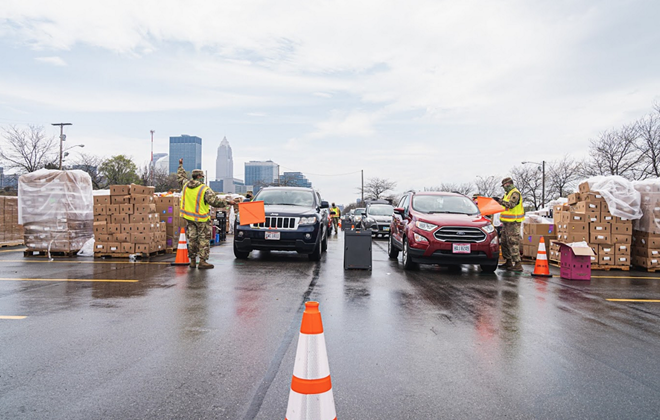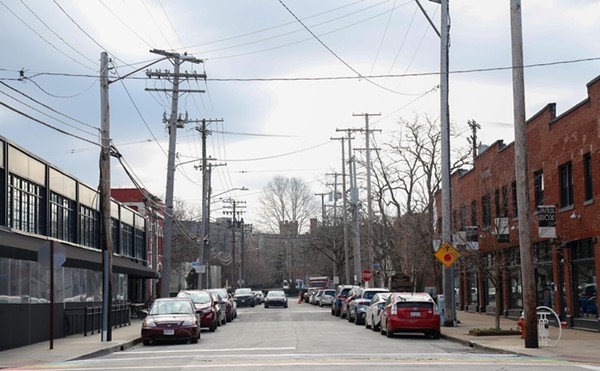40% of Ohio College Students Cope with Food Insecurity
Almost 60% of Black students and 50% of Latino students experience food insecurity, compared with 30% of their non-Hispanic white peers
By Jala Forest, Ohio News Connection on Fri, Dec 2, 2022 at 9:15 am
[
{
"name": "Ad - NativeInline - Injected",
"component": "38482495",
"insertPoint": "3",
"requiredCountToDisplay": "5"
},{
"name": "Real 1 Player (r2) - Inline",
"component": "38482494",
"insertPoint": "2/3",
"requiredCountToDisplay": "9"
}
]
Nearly 40% of college students at four-year universities are affected by food insecurity, according to a survey conducted in 2020 by Temple University's Hope Center for College, Community and Justice.
The rates of college food insecurity have increased by 30% over the last decade, according to a study by the American Public Health Association.
Over that same period, the number of food pantries on college campuses has increased nearly eightfold. According to the College & University Food Bank Alliance, there are food pantries on over 700 college campuses across the United States, compared to just 88 in 2012.
But advocates say college students need more support.
"There is a system in place in this country for low-income kids," said Hope Lane-Gavin, a health equity fellow at the Cleveland-based Center for Community Solutions. "There's free and reduced lunch, for example, and there's other TANF benefits." TANF is Temporary Assistance for Needy Families, a cash assistance program that directs payments to families with children in order to provide care for the children in the household.
"There's all sorts of support for kids," Lane-Gavin added - "but college students aren't viewed as kids."
Low-income students, students of color and international students most affected by food insecurity
Almost 60% of Black students and 50% of Latinx students experience food insecurity compared to 30% of their non-hispanic white peers, according to a study conducted by the Wisconsin HOPE Lab. This study also found that 46% of students who are Pell Grant recipients experience food insecurity.
"Unfortunately, the same students that have intersecting identities... [are] the same students that are unfortunately having challenges [in] likely the rest of their life," Lane-Gavin said.
Students suffering from food insecurity are more likely to fall behind in class, leading to their academic performance, health and well-being to decline.
"I feel more stress and anxiety because I know I really only do grocery shopping on weeks that I get paid," said Natalia Cruz, who is Panamanian-American and a senior theater production and political science major at Kent State University. "But when it's also a week where I have bills and stuff, sometimes I'll wait to do groceries again [until] the next paycheck just to make sure that I have enough money for all my bills."
International students are also at risk of experiencing food insecurity, said Josh Perkins, the Assistant Dean of Students of the CARES Center at Kent State University. The CARES Center provides resources to Kent State students to support their financial, housing, food, and mental well-being needs.
"We see a lot of international students come in because they're limited on the number of hours that they can work, especially if they're new students to the [United] States," Perkins said. "That leads to food insecurity for sure."
SNAP benefits temporarily extended to students
In response to the COVID-19 pandemic, the Ohio state government temporarily allowed college students access to the Supplemental Nutrition Assistance Program (SNAP) if the financial aid application process determined that their families weren't expected to contribute to their education costs.
"If those two exemptions were permanent, that would capture not everybody - but a very, very, very large amount of low-income students that need to be captured, that should be eligible for the SNAP program," said Lane-Gavin.
SNAP is the largest federally funded anti-hunger program in the United States, according to the National Library of Medicine. But for college students to be eligible for SNAP benefits today, you have to meet requirements like being able to work 20 or more hours per week or being eligible to participate in work study on campus.
Cruz said the SNAP application process was challenging.
"Filling out the form [is] kind of stressful," said Cruz. "And then once you submit it, they take so long... I applied last month but I still haven't heard really anything from them."
Lane-Gavin thinks universities can do more to help students take advantage of resources like SNAP.
"That sect of universities that are in charge of student life, campus life and as well as financial aid folks need to be more well versed in how [the] SNAP program works," Lane-Gavin said.
In the meantime, campus food pantries can help students bridge gaps in between paychecks.
"We have two food pantries on the Kent campus," said Perkins of KSU's CARES Center. "I think a big piece is getting the information out there to students. We're pursuing all the avenues. We know how to get in front of students on how to get food."
Coming soon: Cleveland Scene Daily newsletter. We’ll send you a handful of interesting Cleveland stories every morning. Subscribe now to not miss a thing.
Follow us: Google News | NewsBreak | Instagram | Facebook | Twitter
Tags:
SCENE Supporters make it possible to tell the Cleveland stories you won’t find elsewhere.
Become a supporter today.
Scroll to read more Ohio News articles
Newsletters
Join Cleveland Scene Newsletters
Subscribe now to get the latest news delivered right to your inbox.













